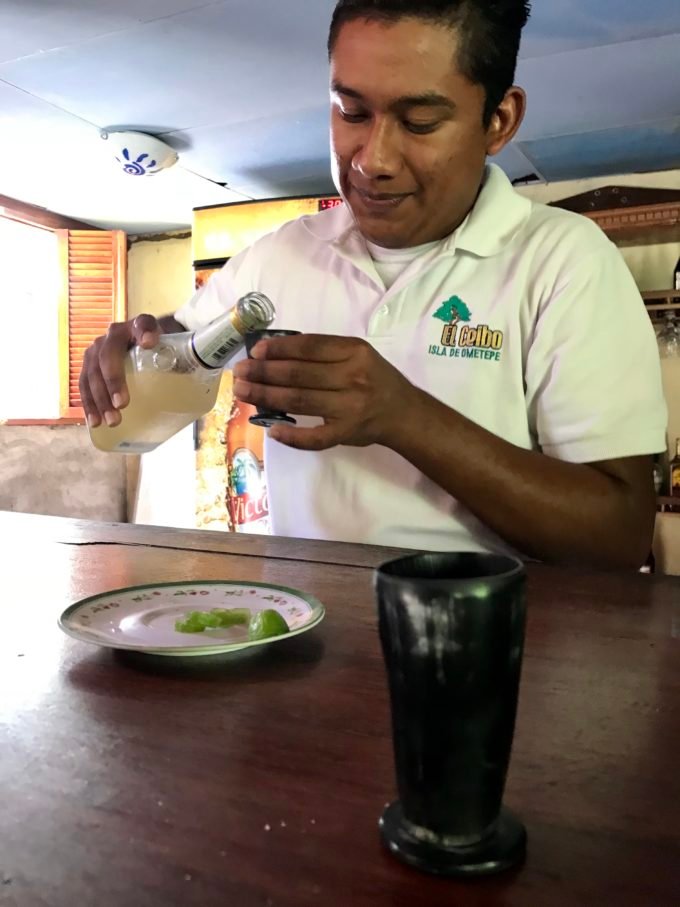
Dude, Just Drink the Liquor and Take the Horn Home Already

Dude, Just Drink the Liquor and Take the Horn Home Already
Cojoyo in Nicaragua
Ometepe is an island in the middle of Lake Nicaragua, shaped like a figure eight, with a volcano on each “O.” It is rural and slow-moving: more people on horseback than in cars, noisy only with birdsong, gales, and howler monkeys. In its sole museum reside some 1000-year-old petroglyphs, and a 1,500 year-old dildo.
At least, that is the best guess of archaeologists. It sits unassumingly behind glass alongside other local prehistoric works, maroon-colored, and shaped like a water-bong on its side. We had all ventured, to the grinning silence of our boyish tour guide, Jol, that it was a pipe. But greater minds had determined that the artifact could not be smoked, nor played as an instrument.
Jol invited us for shots afterwards. The property we were on was called El Ceibo, and along with the museum, included a farm, some rentable rooms, and a cafe bar.
The cafe was an open-aired structure of dark wood, shrouded in palm and banana trees. A few ceiling fans circulated and a warm breeze blew in from the lake, which was just a short way through the jungle. Our guide-turned-barman arranged five shot glasses made of black bullhorn and, from a Jose Cuervo bottle, poured into them a special concoction.
It was called cojoyo: a potent fusion of corn, rice, pineapple, and sugar, made right there on the farm. The indigenous peoples of Ometepe had consumed it for generations. It was not yet 11 a.m, but this was part of the tour. It was educational.
We took it like tequila, with a lick of salt and a bite of mimbro, a very sour fruit resembling a small pickle. Each of us grimaced at the drink’s strength, but it tasted good. Next, Jol pulled from the fridge another drink. It came in a Manischewitz bottle (the property owner’s father was from Israel) but this was just a diluted version of cojoyo, chilled and sweeter. We sipped it like a liqueur.
Behind us in glass cases the cafe kept bull horns that a local artist had hollowed out for drinking, adding a leather strap. They cost US$50 and if you purchased one they would fill it with cojoyo. I entertained the idea but Rob, the other American on the tour, took it more seriously and said, “I wonder if they take credit cards.”
Jol removed a horn from the case and presented it to him. Inspecting the souvenir, Rob lost interest. He began asking questions that Jol couldn’t answer: “Would it leak on a plane?” “Would it pass customs?”
“It’s very cool,” urged our friend Eva. Gripping the bottom of his beard Rob sighed. “I agree. But I don’t know if it’d fit in my carry-on.” We all shrugged. Jol put the horn back.